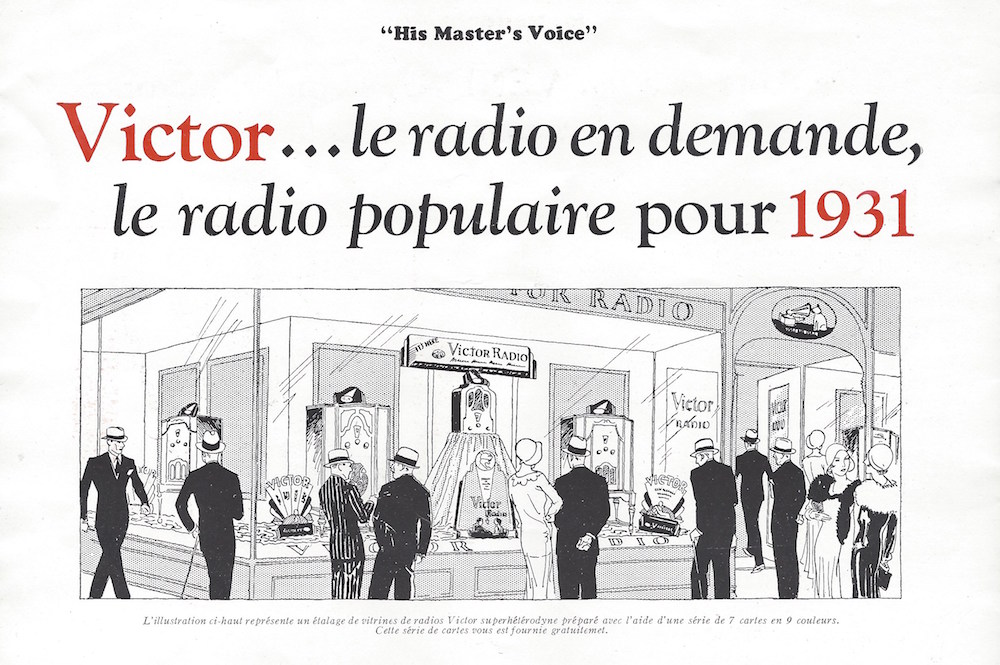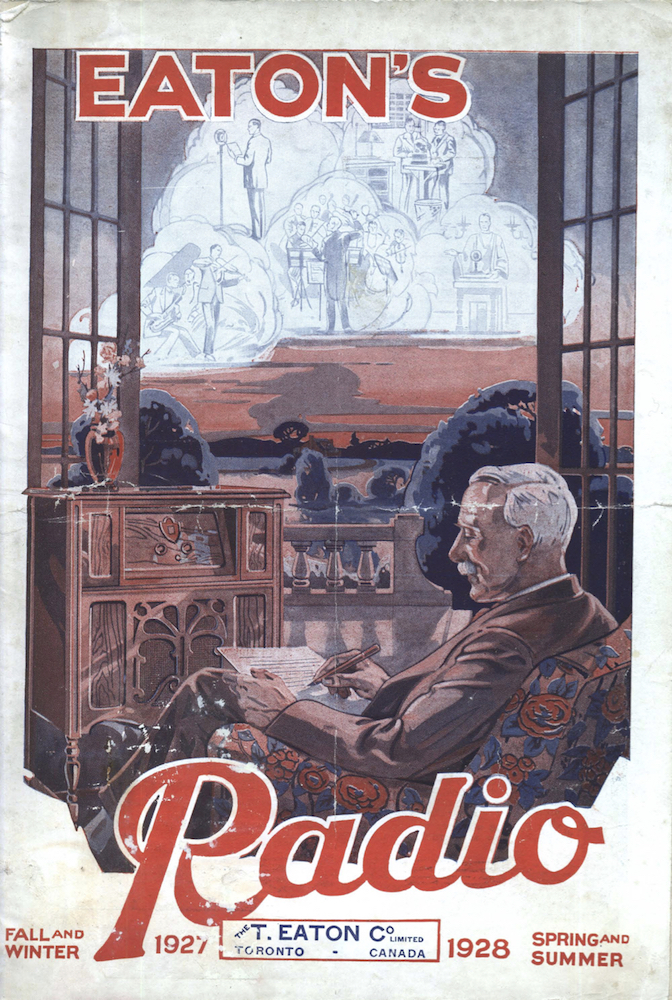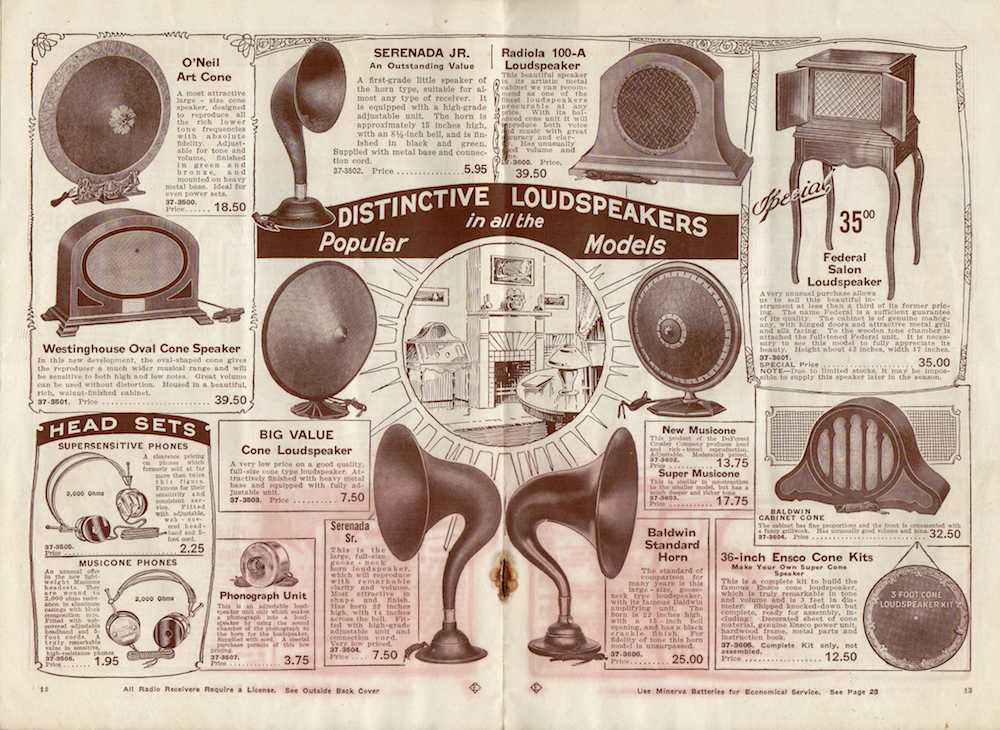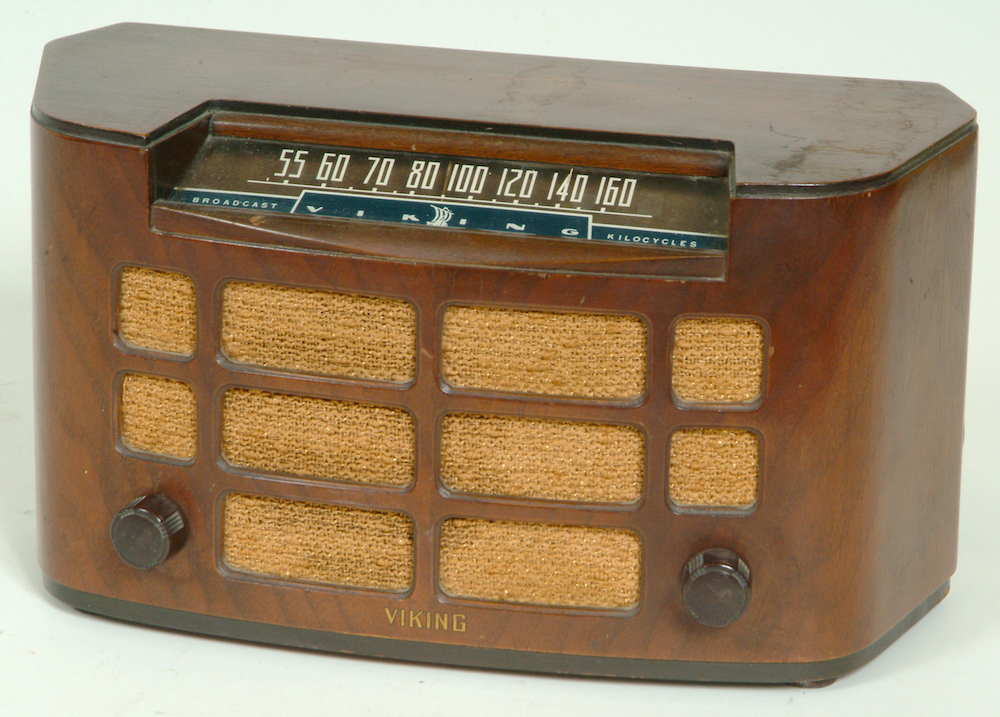Radio Retailers

“Victor…le radio en demande, le radio populaire pour 1931” (Victor…the radio in demand, the popular radio for 1931), His Master’s Voice Edition Spéciale Vol. X, No.2 (June 1931): pp 6 (cropped). Musée des ondes Emile Berliner.
In the 1920s and 1930s manufacturers produced receivers for retailers to sell. Canadians could learn about radios through displays and demonstrations in stores. The first-hand experience convinced people to buy radio receivers and bring them home. Speciality retailers and large department stores sold radio receivers alongside musical instruments since both were associated with sound and entertainment.
The T. Eaton Company was Canada’s largest department store when radio emerged. Like other department stores and retailers, it helped popularize radio by creating displays. In 1921, the company established a radio department in its Toronto store. This service helped introduce radio into homes across the country. Strolling customers in Eaton’s furniture departments could see and hear radio receivers. Seeing the radio as furniture helped customers imagine the new medium in their own living room or parlour.
Eaton’s Toronto store transmitted broadcasts from its own station, known as CJCD. This enhanced in-store sales demonstrations. The retailer did the same in its Winnipeg store in 1922 with station CKZC. Although short-lived, the service helped introduce radio into homes across the country and encouraged sales.

Eaton’s Radio Handbook (1927-1928): cover. La Société Québécoise des Collectionneurs de Radios Anciens (SQCRA).
Eaton’s customers also found radio receiving equipment in the pages of its mail-order catalogues. In fact, the company created special radio catalogues, which included complete sets as well as component parts. The catalogues emphasized battery-operated radios. This shows that the target audience of those catalogues was outside electrified urban centres.

“Distinctive Loudspeakers in all the Popular Models,” Eaton’s Radio Handbook (1927-1928): pp 12-13. La Société Québécoise des Collectionneurs de Radios Anciens (SQCRA).
Retailers sold brands produced by major manufacturers, such as Westinghouse and RCA Victor. They also had their own, in-house lines. Eaton’s, for instance, carried lines called “Minerva” and “Viking.” Dominion Electrohome, a manufacturer based in Kitchener, Ontario, produced these radio sets for retailers. Electrohome also manufactured radios for department stores other than Eaton’s under a variety of names such as “Serenader” for Simpsons and “Dictator” for Hudson’s Bay. With the stimulus of these large department stores, radio became an important part of modern, Canadian households.

Viking: Model 52-30R (1951) manufactured by Dominion Electrohome Industries for The T. Eaton Co. Limited, 19.5 x 35.5 x 16.5cm. Musée des ondes Emile Berliner.

